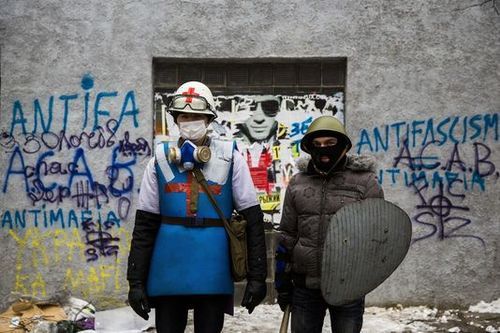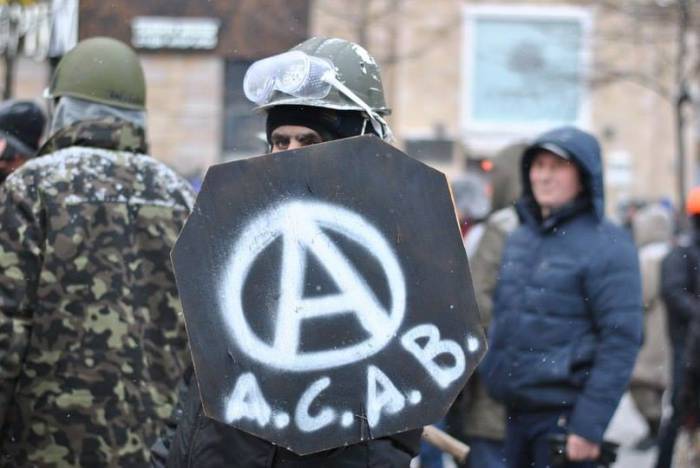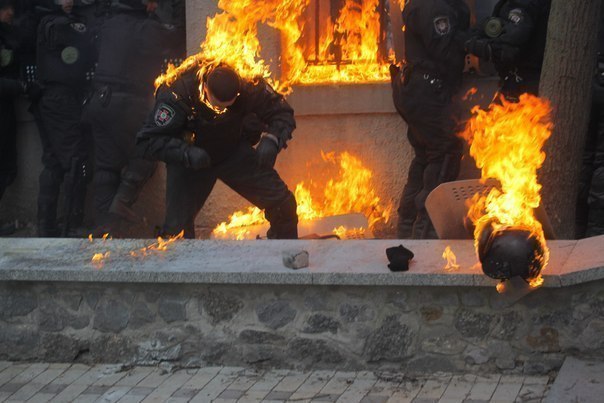For weeks and weeks, we have been looking at Ukrainian events, trying to make sense of what has been happening in Kyiv and other cities. We had read many texts, comments and interviews and discussed about Maidan, but we had been always arriving only at new questions to be answered. Thus, when a possibility occurred to get in touch with Ukrainian comrades one of us tried to use it as best as he could. As a result of that effort and thanks to kindness and patience of Denis from a Kyiv branch of a revolutionary syndicalist group called Autonomous Workers Union the following interview came into existence. Hopefully, it will provide you with many useful insights into the Maidan movement and its context. Continue reading
Daily Archives: February 20, 2014
Ουκρανία: Μια ερασιτεχνική έρευνα για τη σύνθεση των εξεγερμένων


 Αναδημοσιεύουμε από εδώ μια «έρευνα» σχετικά με το ποια είναι, γιατί εξεγείρονται και τι θέλουν τα άτομα που λαμβάνουν μέρος στις συγκρούσεις με τις δυνάμεις καταστολής στο Κίεβο. Αν και ερασιτεχνική, η «έρευνα» αυτή είναι ενδεικτική της σύνθεσης του κόσμου που συμμετέχει ενεργά στην εξέγερση.
Αναδημοσιεύουμε από εδώ μια «έρευνα» σχετικά με το ποια είναι, γιατί εξεγείρονται και τι θέλουν τα άτομα που λαμβάνουν μέρος στις συγκρούσεις με τις δυνάμεις καταστολής στο Κίεβο. Αν και ερασιτεχνική, η «έρευνα» αυτή είναι ενδεικτική της σύνθεσης του κόσμου που συμμετέχει ενεργά στην εξέγερση.
A Sociological Survey With the Purpose of Finding Out Which Social Layers Are the Militant Force of the Modern Revolution in Ukraine?
Introduction
Our assumption has been that in Ukraine we have a revolution combined with counter-revolution. The counterrevolutionaries are the 3 pseudo-leaders – Oleh Tyahnibok of “Svoboda”, Vitaly Kitcko of “Udar” and Arseniy Yatsenuk of “Bat�kivschina”. They struggle with the government of Yanukovich and the Party of Regions for redistribution of the state power, and, hence, redistribution of the former state property (for, you see, in Ukraine and other similar “transitional states”, possession of state power opens the door to grabbing of the state property!). Revolutionaries are those who do not belong to any party, who are by themselves at the barricades and who fight the cops. The official “opposition” and “Maidan” (Maidan refers to the main square in Kiev, Ukraine, where in the winter of 2013-14 there are major anti-government protests and clashes with the police) are two different and even contradictory concepts.
We’re faced with the question: who is the moving force of the revolution in Ukraine today? Who is really manning the barricades and performs other militant functions on the Maidan? To answer these questions we have conducted a sociological survey. We have questioned those who were manning the barricades at the entrance to Maidan from the direction of TsUM (the Central Universal Store, which used to be the main department store in Kiev, located on the main street of the city, Khreschatik). We have surveyed the militants along the Maidan, the guards at the entrance to the Ukrainian House (taken over by the rebels), and especially at the barricades on the Hrushevskogo Street (which was the epicenter of clashes). In the course of one day, 15 February, 2014, we have managed to survey 37 people, while some of the participants have given an extended oral interview, for which I am grateful to them.
We have formulated questions about the education and professional background of the participants. Then we’ve asked the questions about their vision of the situation in Ukraine and what is to be done about it. To be more concrete, we’ve formulated the following 5 questions:
1. Education: 1) didn’t finish school, 2) finished high school, 3) technical 2-year college, 4) incomplete higher education, 5) higher education.
2. What did you do before the Maidan? (type of activity, profession, how did you make a living)
3. What will you do after the Maidan? (What would you like to do? What will you do realistically?)
4. How do you understand the main problems now facing Ukraine? (The main problems of the society).
5. How can these problems be solved? (The ideal final result. The innermost desire for the future of this society). Continue reading
